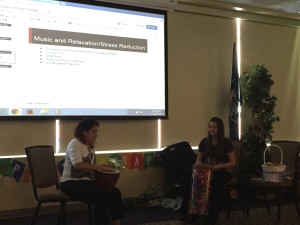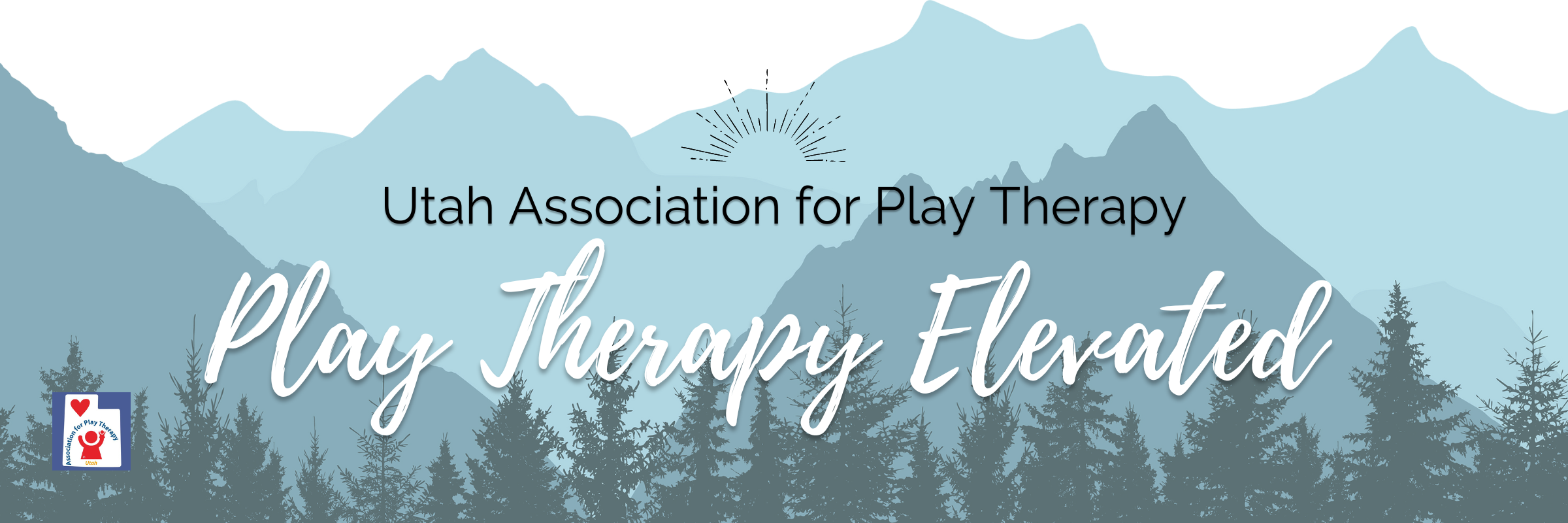 By Alex Gray, LCSW
By Alex Gray, LCSW
The conference started off with a drum circle and I realized, as I do in many play therapy conferences, that there is something about the art of playing together that builds a sense of community. It reduces the threat and intimidation one assumes in a new situation with unfamiliar people. It was easier to be my authentic self.
The second intervention we practiced consisted of listening to music from the last seventy years. Everyone responded differently to different songs due to past, personal connections they had with these songs. It suggested to me that music can be used as a gateway to help a client powerfully remember the thoughts, feelings, and emotions related to important events or people in the past. For example, when helping a client create a sense of safety via guided imagery or “installing the safe place” in EMDR, music personally relevant to the client may be able to help create this. If the “safe place” or guided imagery associated with the music is used often, the client will be able to recall it more readily when needed. If the music helps the client to remember the feelings of a secure connection they had with someone, it can be used to help a client emotionally regulate.
The presenter demonstrated how of all cognitive activities, listening to music seems to use a greater diversity of brain functions. Additionally, making music uses even more. An increased volume of communication between the brain hemispheres, via the corpus callosum, is believed to then be the reason for the improved executive functions many musicians have. Because it seems that many kids with prolonged and early abuse and neglect, or children with ADHD or ASD, have cognitive impairments, listening to and learning to play music may help overcome some of the cognitive limitations. Personally, I work with families who cannot afford music lessons, but I know of many remarkable college musicians who might be willing to volunteer time to facilitate initial music lessons or facilitate a music group.
The presenter then demonstrated how characteristics of music influence mood. For example, she noted that the body becomes “entrained” to have its rhythm follow the rhythm of music it feels. Conversely, a listener may choose music that will fit the rhythm of their body at the moment. Thus rhythm may represent how one feels in their body (i.e., racing, anxious, still?) or can be used to help induce a desired state of arousal/relaxation. The presenter helped us to understand that different pitches resonate with different parts of the body. Deep pitches resonate in the gut and higher pitches resonate in the throat, head, or above the head. Deeper tones are often considered calming. Given these facts, I wonder if there is something to the connection between anxiety often being felt in the gut and deeper tones resonating with the gut as being calming. Additionally, it is interesting that higher pitches can be annoying and overwhelming if one is overwhelmed with sensory integration or with “things on their mind,” and yet conversely, can be motivating and inspiring when one is hypoaroused. Again, knowledge of pitches and how they change mood state may be helpful in a clinical practice. Lastly, the presenter pointed out how harmonious music is calming, and music with dissonance may provoke anxiety. She pointed out to watch how dissonance between the mood and lyrics of music can represent the irony people feel inside (i.e., “I am a Rock” by Simon and Garfunkel”).
After we practiced noticing how these different qualities of music influenced us, the presenter shared the “ISO principle.” This principle states that if the goal of music is to help a client go from anger, depression, or any other distressing mood, you must have the client select music that resonates with that mood first. And then after using that music as a way to validate their emotional state, you gradually move to music that represents the desired mood for the client. She reminded us to be aware of pitch, rhythm, volume, and the timbre (sound quality) and how these often correlated to specific moods.
We discussed additional musical interventions that can be used in therapy. For example, having a family follow the rhythm one family member makes (with a drum, maraca, or body percussion), provides an opportunity for attunement. If the family can create an orchestra, attunement and non-verbal communication is enhanced. It also allows the clinician to see roles in the family and how family members do with being vulnerable with each other.
Moreno-Music Play therapy is much like non-directive play therapy with instruments instead of toys. The clinician “tracks” the child’s experimentation with instruments. The therapist can aid their attunement with the client by making music with them or learning a song from them. Structure can be introduced into the play by teaching the client a song (teaches frustration tolerance) or asking them to identify instruments that they can play to express various emotions.
Music Chronology is an intervention where the clinician compiles a CD that evokes memories, feelings, or thoughts about a significant trauma/event from a client’s past. Then the clinician helps the client find additional songs to frame their current thoughts and feelings. Lastly, the clinician helps the client find songs that represent future hopes, dreams, and goals. It is designed to reframe the clients past traumas in a way that is adaptive to their current and desired sense of self. This may be a time to challenge the current and future sense of self with alternative songs.
A final intervention that I enjoyed was rewriting the lyrics to “These Are a Few of My Favorite Things.” The group singing our new lyrics provided a sense of community. The lyrics became personal expressions of things we do to manage difficult emotions. I dreamed of learning to play the guitar and making this intervention one that can be playful and vulnerable with clients who enter my office.




Pingback: October Play Therapy Wrap-Up :: PlayTherapyPage